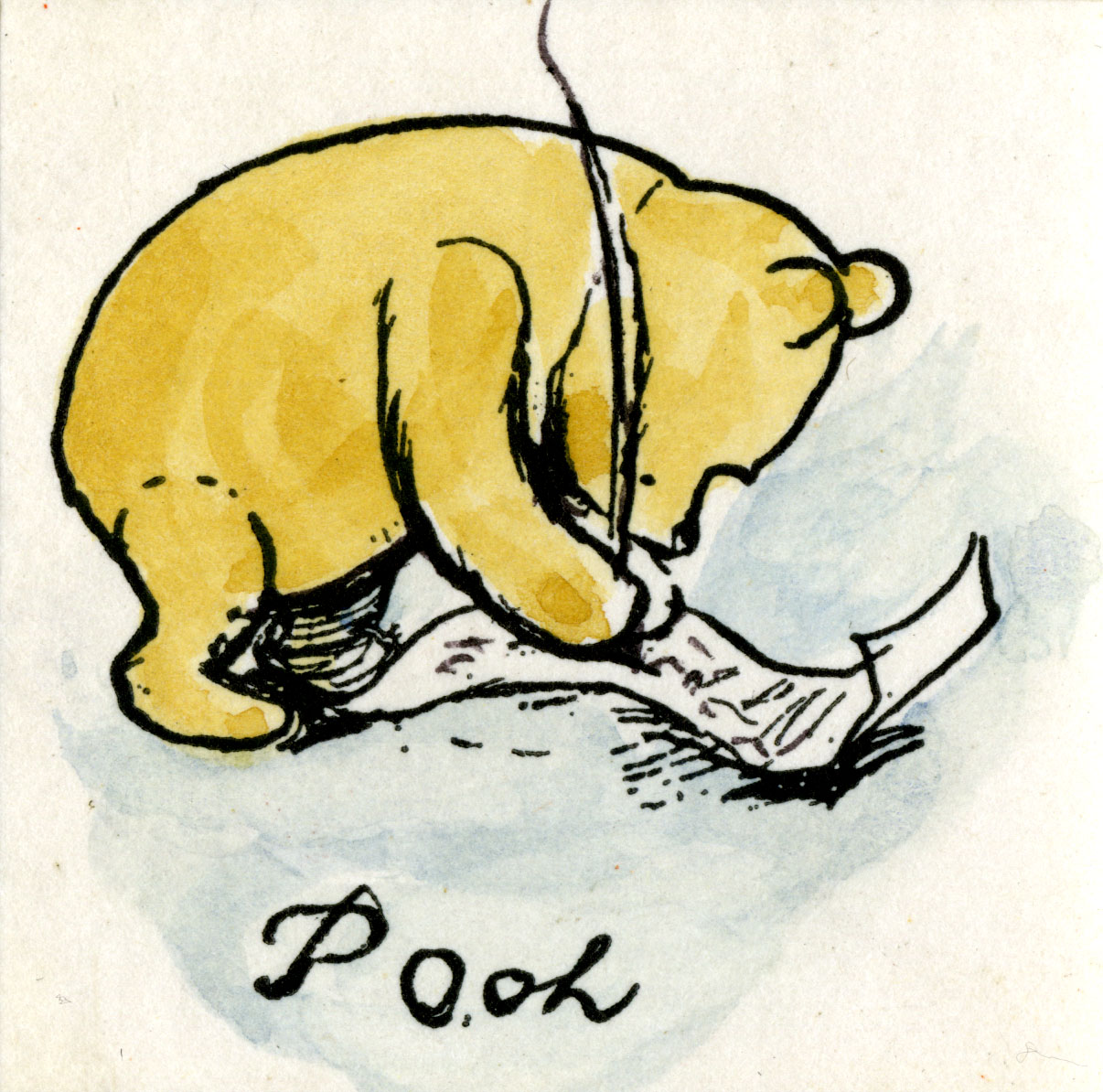Over the last few months I have steadily been proof reading catalogue records for E.H. Shepard’s business correspondence, greatly enjoying myself and learning new things.
What immediately struck me was what this correspondence reveals about Shepard’s impact on the world. We learn that in the late 1960s the University of Southern Mississippi has started work on a medallion which they wish to present to Shepard (EHS/C/5/6/11), whilst in 1948 we find he had given a painting to Marie Stopes because she writes to thank him for it (EHS/C/5/2/41). In 1961 a children’s librarian from New York writes in hope Shepard will autograph the picture she has sent (EHS/C/5/2/12), whilst in 1958 there is much sadness that Shepard will not be illustrating Peter Pan (EHS/C/5/5/12). And in 1968 a dormitory in the Boarding House at St Paul’s Preparatory School is named in honour of him (EHS/C/5/6/3).
In addition, there is the media interest. Look around the correspondence relating to research and interviews (EHS/C/5/4) and you will find the BBC, The Sunday Times, and Harpers Bazaar amongst others.
From the letters we can also catch sight of Andrew Holmes’s film, ‘Mr Shepard and Mr Milne’ (letters to E H Shepard from Andrew Holmes, EHS/C/4/6). Whilst the letters are not very forthcoming about the content of the film, they do shine a light onto life in the 1970s. My favourite comment comes from the 14 May 1973 letter (EHS/C/4/6/9) in which Holmes offers to visit Shepard “with a portable projector and show the film to both Shepard and his wife Nora” (quotation from catalogue record, not the original letter). The concept of having to transport not only the film but also the means of showing it is a quaint one in these days of on-demand streaming. And was Andrew Holmes also intending to provide a screen onto which he would project the film? Or is the assumption that the living room wall would have been pressed into service? Sadly, not having Shepard’s side of the correspondence, and having no further letters from Holmes in this section, I do not know whether this private showing of the film ever happened and whether he was required to provide a suitable wall. But I really hope it did!
This leads me on to thinking about the nature of letters within archives. Quite often an archive will only contain one side of the correspondence, the incoming letters. This is the case with Shepard’s business correspondence. Sometimes a later letter will indicate Shepard’s reply. For example, he was contacted by an American teacher of Children’s Literature who was on a research visit to the UK. We know he must have agreed to her request to meet him because she sent him a thank you letter (EHS/C/54/42). And sometimes we have Shepard’s annotations on the letters which indicate how he was considering replying. But for the most part in the business correspondence we only have one side of the conversation, so we are left guessing or looking to see if Shepard’s correspondence has survived elsewhere. On the other hand, if you are interested in, for example, Shepard’s correspondence with his first wife, Florence, during the First World War, then you are fortunate indeed for we hold both the letters from Florence to Shepard (EHS/C/13/12 onwards) and from Shepard to Florence (EHS/C/9/14 onwards). And you will be the envy of other researchers who find themselves having to go to two or more archives, possibly in different countries, in order to see both sides of the correspondence.
I have also had the excitement of making mental connections whilst reading these records. On 30 June 1971 David Franklin wrote to Shepard to say how he enjoyed his visit and how he was excited to see the “newly coloured drawings” (EHS/C/4/6/5). On 11 November 1971 Andrew Holmes writes to Shepard to say “he will be seeing Shepard’s coloured Pooh drawings at Methuen’s” (EHS/C/4/6/5). It took a moment for me to realise that these are almost certainly the hand-coloured drawings by Shepard which were deposited with us a few years ago and are held in the Egmont UK Ltd ‘Winnie-the-Pooh’ and ‘The Wind in the Willows’ Collection (EGM). Therefore, if like Franklin and Holmes, you wish to view the coloured drawings for yourselves (or indeed the E H Shepard Archive or any of our other collections), please just contact us!

So in conclusion, there is a lot to find in these letters. Have a look round the catalogue and immerse yourself in a different world. If you want to browse the catalogue, start here and click on the + to explore the different sections. If you want to dive straight in, go to the search page. However you approach this archive, enjoy your time here!
